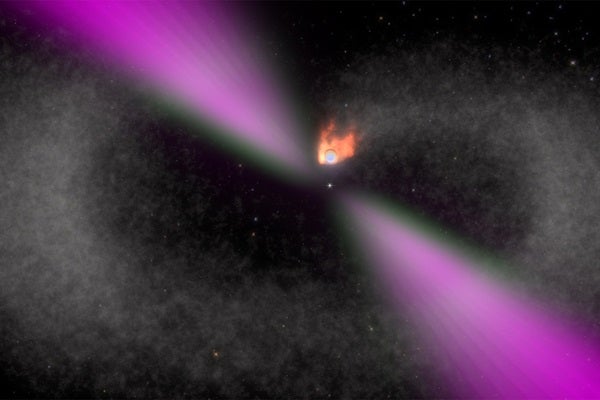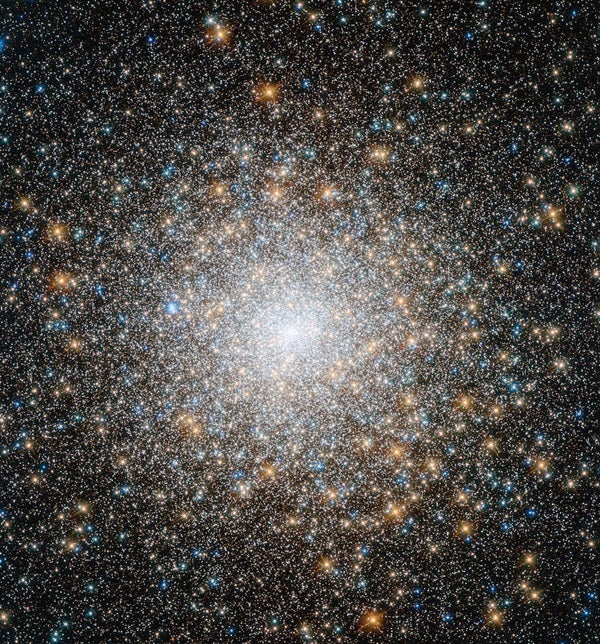Black widow binaries get their name from the infamous spiders who devour their mates after copulation (although this tends to be more of an exception than the rule). These binary systems consist of a fast-spinning neutron star, known as a pulsar, along with a nearby companion star. The neutron star steadily feeds on its neighbor, eventually killing it.
So far, astronomers have discovered only about two dozen black widow binaries in the Milky Way. But now, a new candidate is opening up new avenues for finding these cannibalistic systems.
Located some 3,000 light-years away, ZTF J1406+1222 has the shortest known orbit of any black widow binary: 62 minutes. But what also makes this system unique is that it contains a third star that circles the central pair every 10,000 years. The discovery was published in Nature on May 4.
Curious beginnings
Most black widow binaries are believed to have formed within globular clusters. These clusters are dense and filled with thousands to millions of older stars.
In the case of ZTF J1406+1222, the cluster may have fallen to the center of the Milky Way. There, gravity from Sagittarius A* — the supermassive black hole at the heart of our galaxy — ripped the globular apart. However, the triple black widow system managed to survive the onslaught.
“It’s a complicated birth scenario,” lead author Kevin Burdge said in a press release. “This system has probably been floating around in the Milky Way for longer than the Sun has been around.”
Beacon in the sky
Normally, scientists spot black widow binaries thanks to ample gamma rays and X-rays emitted from the pulsar. Every other such system has been found in this manner. But Burdge had another idea for finding these elusive pairs: searching for them in optical light.
Without a companion, pulsars will spin down, quickly burning through their energy. But with a nearby companion, they can siphon extra material from the second star, extending their lifetime. The new material reenergizes the pulsar, causing it to spin faster. It also makes the pulsar radiate extreme doses of energy, which serve to strip more and more material from its companion.
In the interim however, the companion’s dayside — the one facing the pulsar — glows brighter and hotter thanks to the extra doses of radiation it receives. “I thought, instead of looking directly for the pulsar, try looking for the star that it’s cooking,” said Burdge.
A periodically brightening star, Burdge realized, would be a beacon signaling a potential black widow binary. And sure enough, after testing the new method on previously discovered systems, the team spotted a different star brightening by a factor of 13 every 62 minutes.
ZTF J1406+1222 is still only a candidate, however. While the optical technique has proven successful with known black widow binaries, the newfound system did not reveal its widow status through the typical means: gamma or X-rays from the pulsar.
“The one thing we know for sure is that we see a star with a day side that’s much hotter than the night side, orbiting around something every 62 minutes,” Burdge says. “Everything seems to point to it being a black widow binary. But there are a few weird things about it, so it’s possible it’s something entirely new.”
To get to the bottom of this cosmic mystery, the team is planning to continue scrutinizing the system, as well as hunt for more black widows like it.











